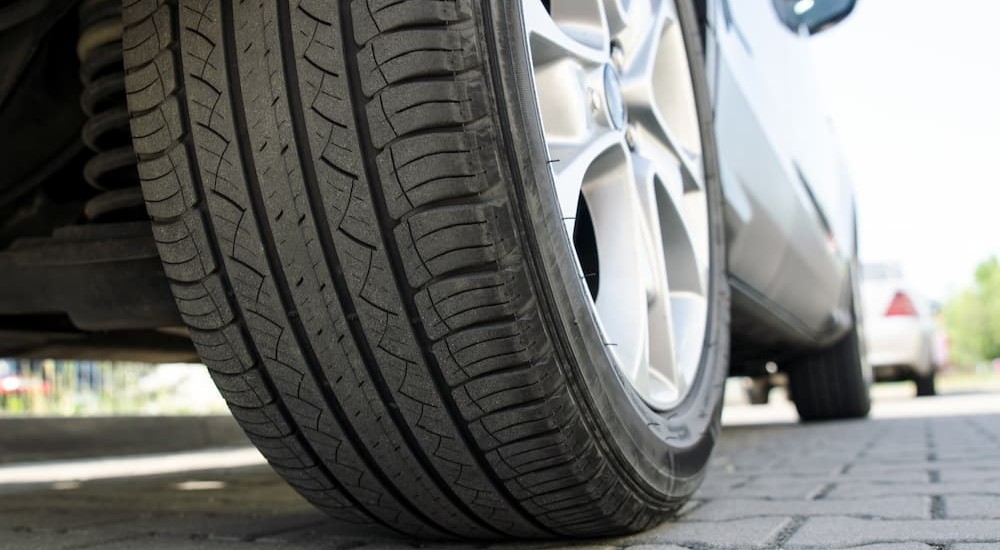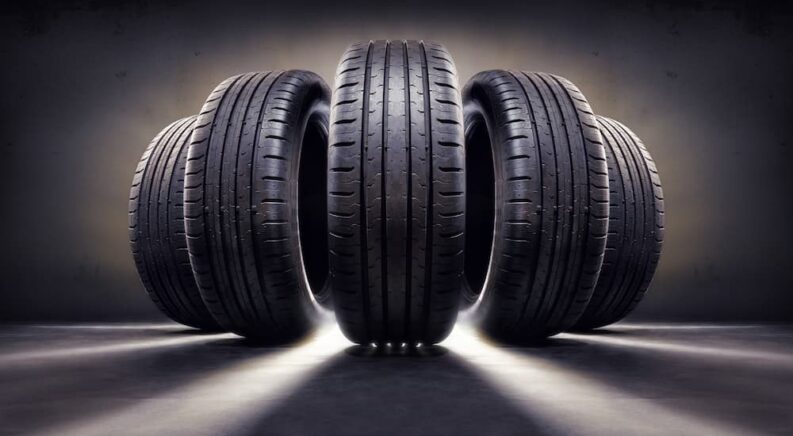Tires are one of the most important parts of any vehicle, but they don’t always get much of our attention. The exciting and fun features like infotainment, transmission, and seat heaters are what drivers tend to look at. However, making sure you have the right tires for your environment and your driving habits is important to not only having a pleasant but also a safe driving experience. The main tires people consider when shopping for tires are winter, summer, and all-season. Understanding the differences between these is important to pick out the tires best suited to your environment.
To give you a quick breakdown: winter tires can handle thick snow, ice, and freezing temperatures, while summer tires are best for mild climates, and all-season tires are good for something in between winter and summer tires. People often confuse all-season tires for winter tires, but they are distinctly different. So if you’ve decided that all-season tires are for you and you’ve been looking for all-season tires for sale, here are some FAQs about these tires to help you understand this tire category and make the best choice.
What Makes an All-Season Tire, All-Season?
For each category of tire, it all comes down to the treads. These are the groove patterns on the tire. Their depth affects the grip of your tire on a variety of surfaces. Next time you’re in a severe winter climate, look around, and you’ll likely notice tires with seriously deep treads and lots of little slits called sipes. These offer good traction on ice and thick snow. On the other end of the spectrum, summer tires will have very modest tread because they don’t require extreme grip. Your all-season tire sits somewhere in between.
Tread depths are measured in 32nds of an inch. An all-season tire will generally have a tread depth of 6/32-inch. (Pro tip: periodically measure the depth of your tire tread. If it gets as shallow as 2/32-inch, it’s definitely time to replace your tires because the grip will be diminished.)

Can All-Season Tires Handle Winter Weather?
The answer to this question is: kind of. All-season tires can handle mild winters. So think light snowfall and temperatures no lower than 45 degrees Fahrenheit. Their tread isn’t going to provide the grip you need in serious snow, and it certainly isn’t safe for ice. Only winter tires, with their extra-deep treads and sipes all over, are ready for ice.
Temperature matters, too. All-season tires are made with rubber compounds that will harden when exposed to temperatures lower than 45 degrees. This will make the rubber less pliable, meaning it won’t conform to the ground as well, and that means a poor grip, though they are better than summer tires in this area. Winter tires, on the other hand, are made with rubber that remains pliable in freezing temperatures. So, if you do opt for all-season tires, don’t only consider how much it snows where you live––consider how cold it gets, too.
Can Any Car Accommodate All-Season Tires?
Pretty much any car can take all-season tires, from sedans to minivans to SUVs to sports cars. All-season tires are likely what you will find when you buy a vehicle brand new and are the most common type as they act as a jack-of-all-trades when it comes to driving. It’s easy to find all-season tires for any car at your local tire shop or even online.
Who Should Get All-Season Tires?
If you live somewhere that sees light snowfall and mild winters, you could benefit from all-season tires. They’ll do well in the rain, too. It’s also worth noting that some people get two sets of tires––one set of winter and one set of summer tires––but if you don’t see severe weather where you live, you could likely do away with your two sets and just get one set of all-season tires. If you do experience all four seasons, all-season tires will be best for those spring and fall months when the weather changes drastically from freezing to hot from one day to the next or even throughout the day. Changing between summer, all-season, and winter tires can also help prolong the lives of your tires, meaning you can go longer before you have to buy a new set.
Who Should Not Get All-Season Tires?
Drivers who regularly drive in deep snow, on ice, or in temperatures below 45 degrees Fahrenheit should not get all-season tires. These drivers will need winter tires. Trying to use all-season tires in the conditions described above can be very dangerous as they won’t provide the traction you need in certain situations. Similarly, if you only experience hot weather all year round with the occasional rainfall, summer tires are the ones you want to have on your car.
How Much Do All-Season Tires Cost?
All-season tires are some of the more affordable tires. The cost of all-season tires depends on the size and brand of the tires, among other factors. You can get cheaper options, but be wary of going too cheap, as those tires will likely wear out quicker. Likewise, you can get fitted with an expensive set that is going to last a while but will put a severe dent in your wallet and may not be much better than a mid-range option. Some tire manufacturers also offer warranties on their tires to cover you in case of a defect in the tire.
We recommend looking for tires in the mid-range, as these will offer a good mix of quality and price. Try to find tires with a longer tread life. Tread life ranges between 50,000 to 90,000 miles, so aim for somewhere in the 70,000-80,000 range if you can. These may cost a little more, but they will be well worth it when they last longer.
What’s the Difference Between All-Terrain and All-Season Tires?
While these two tires might sound similar, they are very different. All-terrain tires are meant for extreme off-road conditions. All-terrain tires are not meant for most normal driving conditions (like highways and paved roads). You will regularly find all-terrain tires on off-road vehicles that come with other off-road features like tow hooks and raised suspensions. All-terrain tires have treads that are deeper and wider than those found on all-season tires, so they can bite through mud, sand, and rock.
One easy way to identify all-terrain tires on regular roads is noise––they will be loud. That’s because they don’t really belong on paved roads. In fact, driving for long periods on paved roads with all-terrain tires is not comfortable and will wear out the tires much faster.

Do All-Season Tires Get Good Fuel Economy?
When used as they are intended, all-season tires get good fuel economy. In fact, because they offer good traction in most conditions, they relieve some driving pressure off the tire, which can increase fuel economy. In general, you will get the best fuel economy of any tire type when you use it in its intended conditions.
So, Are All-Season Tires Right for You?
As you can see, you don’t just want to get the first tires you see or the most affordable ones. It’s important to think about the conditions you’ll be driving in and the climate in which you live. All-season tires might sound like they’re good for all weather, but that is not true. They won’t handle severe winter weather––that’s what winter tires are for. However, if you live somewhere with mild winters and temperatures that don’t drop below 45 degrees Fahrenheit, all-season tires are probably right for your car.
Do remember that tires wear down over time, and if you notice your all-season tire tread wear down to 2/32-inch, it’s time to replace them. A shallow tire tread can affect the stopping distance of tires, which can be dangerous. Be sure to get the right size tires for your car; your local tire shop can help you figure all the details out, or you can get the information from your current set.
Your tires don’t just keep a vehicle moving: they also impact your traction with the ground beneath you. Good traction is critical to a safe driving experience, and different temperatures and weather conditions can impact traction. All-season tires will be right for you if you only face conditions that moderately impact traction.

